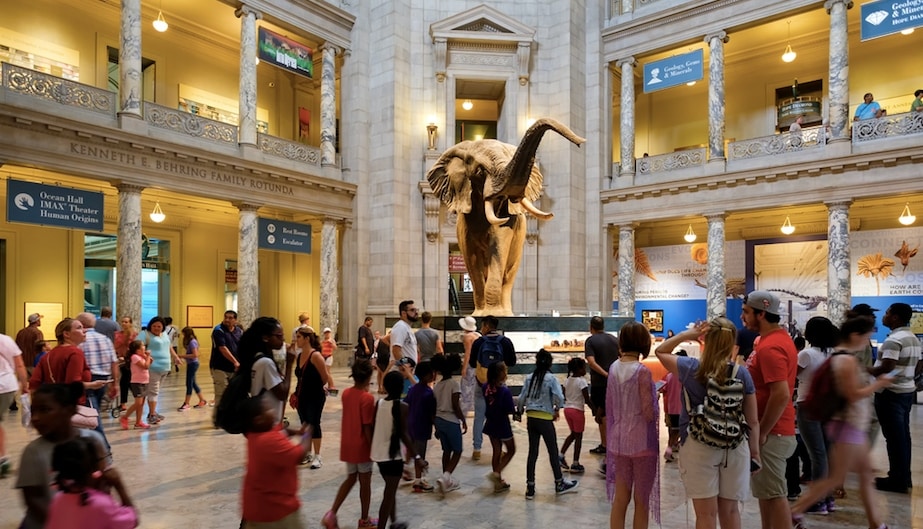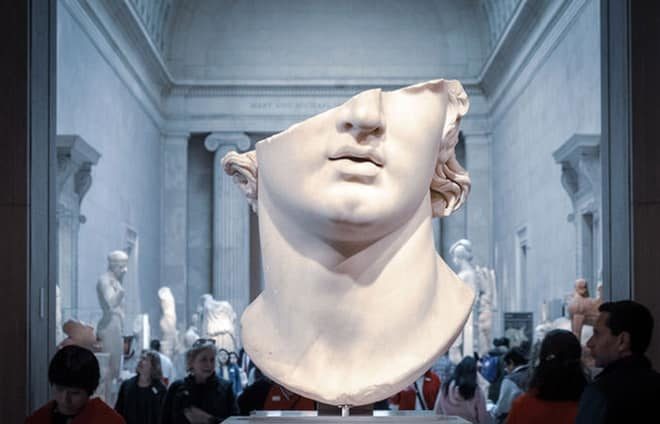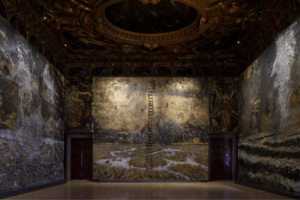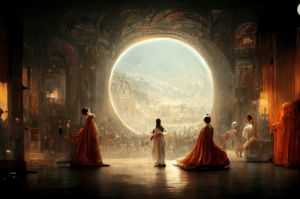Throughout the years, humanity has often turned to the arts in times of adversity. It seems that when the world around us crumbles and ceases to make sense, we turn inward and seek a new meaning to events and objects surrounding us. In these times of introspection, we tend to appreciate and find a deeper meaning in works of art. Paintings seem to come to life as each stroke of a brush seems more meaningful, and the silhouettes on the canvas invoke feelings and insights we typically overlook. But what do we do when the world limits our movement and does not permit us to experience art in person. The answer in the present-day world is to go digital. As the COVID-19 pandemic confines people to their homes, many museums and cultural organizations are utilizing technology to open their doors to people bound in their homes.
The concept of virtual museums has been around for over two decades. While some institutions saw the benefits of them in the early years, they were not widely accepted. Many saw them as expensive undertakings that produced awkward and underwhelming results, with choppy navigation and variable quality. However, as the years passed and technology improved, significant progress has been made in producing affordable and reliable virtual walks and viewing options for museum collections.
Ever since technological innovation made virtual tours more feasible, many museums around the world took the initiative and continue to create more virtual content. The initial idea about the virtual art viewings was so appealing that Google embarked the initiative to launch Google Arts and Culture, a project in which they partnered with hundreds of museums to bring virtual experiences of some of the best galleries around the world. While it is true that virtual representations cannot replace the experience of seeing in the real world, they do play a vital role in bringing the experience to life. The goal of the virtual museum is not to compete with or replace traditional museum visits, but to enhance, complement, and augment the museum experience by offering a level of personalization, interactivity, and richness of content that is impossible to bring in the real world. This makes them valuable digital tools that can bring about numerous and multi-layered benefits:

Location (and Time) is No Longer a Problem
One of the most significant benefits of virtual museums is the fact that your location does not constrain you. Museums worldwide offer digital tours, shows, and exhibitions that allow you to immerse yourself in their art regardless of location and geographical boundaries. In fact, some museums go a step beyond and add images or simulations of different times. Imagine looking at works of arts or artifacts from all over the world and being able to see a simulated version of the time they were made in.
DrawIn More Visitors
One of the main reasons many institutions opposed the idea of virtual tours was the idea that it would satisfy people’s curiosity and stop them from visiting. However, this could not be further from the truth. Many museums have found that digitalization increases website traffic and brings about more visitors to the museums themselves. Virtual tours actually inspired many people that were indifferent or opposed to visiting these locations into putting it on their bucket list. Showcasingmasterpieces and lesser-known pieces of art in these museums with additional context, history, and techniques has piqued people’s curiosity and inspired them to one-day visit locations in person.

Education and Entertainment
Virtualization has brought about more insight, freedom, and immersion into art. People of all age groups have the option to experience and interact with exhibitions at their own pace — making them more receptive to learning. This is not only a great way to attract and educate and entertain the youth, but to provide additional information, insight, and freedom to older and mature art lovers.
Traditional museums have certain limitations. These can be classified into time, information, and arrangement.
- Time – When people visit brick and mortar locations, their stay is limited to a certain time period. This means that they might have to rush through the museum to experience as much as possible or plan repeated visits to get meaningful insight into the art.
- Information – There is a limit to how much information museums can showcase in their exhibitions. They are usually forced to add onlythe essentials, giving people a limited insight into the works of art.
- Arrangement – Each museum follows its own “flow” – method of organization and classification. This means that no matter how much effort they put into giving free roam of the exhibition halls, visitors will always be forced to follow the curator’s layout and courses.
Virtual museums eliminate these hindrances by providing a more intimate and personal voyage through exhibitions. Visitors are able to browse through art they find interesting, at a pace that meets their needs. In addition to that, they have access to a lot more information about the pieces. Virtual tours enable people to study items from multiple angles (360° images, internal images, zoom capabilities), and they also offer more research and context to items showcased.
Conservation
Curators often find themselves torn between the desire to showcase items to the world and conserving them in the proper environment. With digital virtualization, this problem and constriction is eliminated. Valuable artworks that require proper conservation can be digitized – allowing them to be showcased, while also remaining under conservation treatments and measures.

Must See Virtual Tours
With so many benefits to virtual museums, it is no wonder that some of the biggest and most impressive museums have embraced the virtual world. If you find yourself in lockdown and are interested in expanding your art world horizons, consider these virtual tours and online collections.
- National Gallery of Art – Washington
- British Museum – London
- National Museum of Modern and Contemporary Art – Seoul
- Louvre – Paris
- MASP – Sãn Paolo
- Guggenheim Museum – New York
- The J. Paul Getty Museum – Los Angeles
- Uffizi Gallery – Florence
- Van Gogh Museum – Amsterdam
- Pergamon Museum – Berlin
- Rijksmuseum- Amsterdam
- Musée d’Orsay – Paris
- The Broad – LA
Digital museums need to be seen as a coequal to traditional museums. The experience can never replace the real experience of standing in front of art, but it can add another dimension to the experience. The goal is to enhance a palette of possibilities to people looking to feel more. After all, there is a lot more to “art” than what hangs on the museum walls. The experiences, ideas, techniques, and principles used to create it are just as important. If we can give people a glimpse, even digital, into the sublimity of Art, then we have done our part, for the whole.







